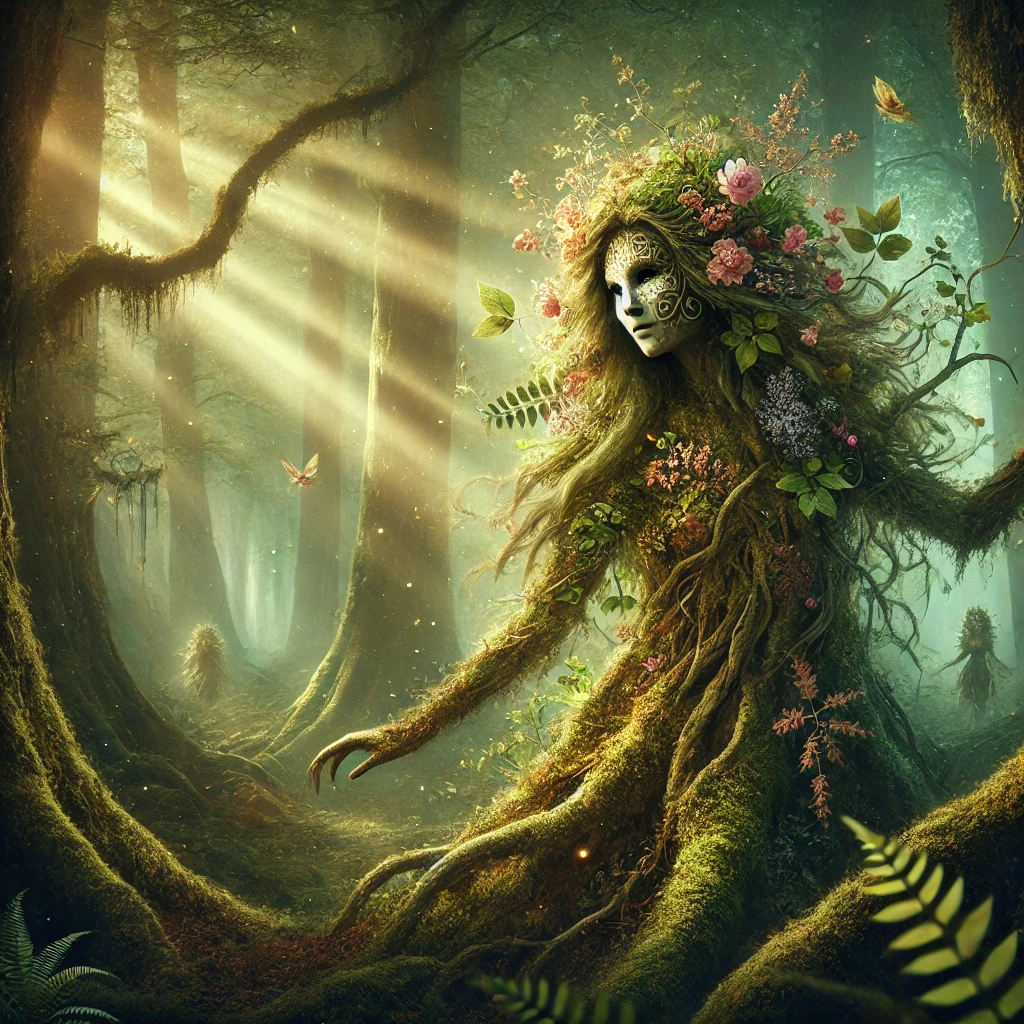Overview
Dryads are mythical creatures from Greek mythology known as tree spirits or nymphs that inhabit trees, particularly oaks and other forest trees. These entities are deeply intertwined with the life force of trees and are believed to personify and protect the woods and forests in which they reside. As guardians of botanical life, dryads are venerated as manifestations of nature’s delicate balance, nurturing the growth and health of trees while maintaining the ecosystems around them.
Understanding Dryads
1. Characteristics and Nature
- Intrinsic Bond: Dryads are born bonded to a specific tree or grove. If the tree dies, the dryad associated with it often dies as well, highlighting their profound connection.
- Longevity: They share the lifespan of their trees, often living for centuries if their trees remain unharmed, thus symbolizing stability and persistence.
2. Roles and Functions
- Protectors of Forests: Dryads ensure the vitality and safety of their trees and surrounding vegetation, protecting them from threats and promoting ecological health.
- Spiritual Guides: In folklore, dryads are sometimes seen as guides, offering wisdom and knowledge about the natural world to those who respect and protect the forest.
Cultural Significance of Dryads
1. Greek Mythology
- In ancient Greek lore, dryads are seen as shy and elusive but could interact with gods and humans. Famous mythological figures like Daphne, who transformed into a laurel tree to escape Apollo, highlight the mystical aspects of dryads.
- Classes of Dryads: There are several types of dryads, such as Hamadryads (bonded with oak trees) and Meliae (ash tree nymphs), each specific to different types of trees.
2. Symbolism in Art and Literature
- Dryads have been depicted in various forms of art and literature as symbols of the divine essence of nature and the beauty of wild, untamed places.
- They often represent themes of environmental protection, natural beauty, and the interconnectedness of life.
Engaging with Dryads
1. Environmental Stewardship
- Protecting and preserving forests and natural habitats is akin to honoring and supporting dryads. Activities like tree planting, sustainable forestry, and habitat restoration can be viewed as modern engagements with these spirits.
- Awareness Campaigns: Educating others about the importance of forest conservation can help ensure the survival of dryads in folklore and in reality.
2. Spiritual and Recreational Activities
- Forest Bathing and Nature Walks: Spending time in forested areas and practicing mindfulness can enhance one’s connection with tree spirits, potentially leading to rejuvenating spiritual experiences.
- Meditation and Rituals: Some people perform rituals or meditative practices in wooded areas to communicate with or pay respect to dryads, fostering a deeper connection with the natural world.
3. Artistic Inspiration
- Artists, writers, and musicians can draw inspiration from the lore and essence of dryads to create works that celebrate or invoke the mystery and majesty of forests and their spiritual guardians.
- Cultural Events: Festivals and performances that celebrate nature and its spirits can serve as platforms to acknowledge and learn about dryads and other nature spirits.
Conclusion
Dryads embody the mystical and enduring nature of forests, reminding us of our intrinsic connection to and dependency on the natural world. Their lore encourages us to protect and cherish forests, not only for our well-being but for the preservation of biodiversity and the health of our planet. Engaging with the concept of dryads invites a celebration of nature’s beauty and a commitment to sustaining the green spaces that enrich our lives and shelter these ancient spirits.

